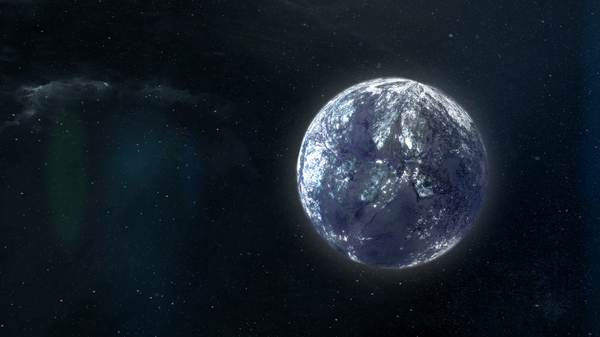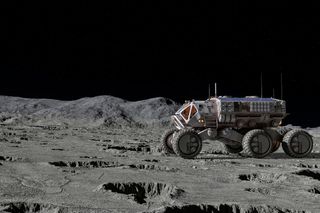
Topics: Astronomy, Astrophysics, Carl Sagan, Civilization, Existentialism, Star Wars, Star Trek, STEM
Apollo 11 (July 16–24, 1969) was the American spaceflight that first landed humans on the Moon. Commander Neil Armstrong and Lunar Module Pilot Buzz Aldrin landed the Apollo Lunar Module Eagle on July 20, 1969, at 20:17 UTC, and Armstrong became the first person to step onto the Moon's surface six hours and 39 minutes later, on July 21 at 02:56 UTC. Aldrin joined him 19 minutes later, and they spent about two and a quarter hours together exploring the site they had named Tranquility Base upon landing. Armstrong and Aldrin collected 47.5 pounds (21.5 kg) of lunar material to bring back to Earth as pilot Michael Collins flew the Command Module Columbia in lunar orbit, and were on the Moon's surface for 21 hours, 36 minutes before lifting off to rejoin Columbia.
Apollo 11 was launched by a Saturn V rocket from Kennedy Space Center on Merritt Island, Florida, on July 16 at 13:32 UTC, and it was the fifth crewed mission of NASA's Apollo program. The Apollo spacecraft had three parts: a command module (CM) with a cabin for the three astronauts, the only part that returned to Earth; a service module (SM), which supported the command module with propulsion, electrical power, oxygen, and water; and a lunar module (LM) that had two stages—a descent stage for landing on the Moon and an ascent stage to place the astronauts back into lunar orbit. Source: Wikipedia/Apollo_11
The first communal experience I recall is one now doubted by people swearing they "have the proof" in grainy YouTube videos and that I should "do my research!" Yeah.
June 3, 1969, the third and final season of Star Trek: The Original Series aired "Turnabout Intruder," its 24th and last episode. There was no "final curtain" or neatly wrapped-up script tying plot points. Many of us fans were left adrift. Syndication made the franchise a legend.
In July of 1969, I was six, one month from turning seven years old. In my maturity, then, there were a few priorities: eating, sleeping, playing, and cartoons.
My cartoons were interrupted on July 19, 1969, a Saturday ritual that any kids born after 2014 are bereft of the experience. It was my "chill time" to not think of the pending school year starting a few days after my birthday in August, which is probably why I've never made a big deal about my birthday. My cartoons were interrupted. I was missing "Tom and Jerry," "Woody Woodpecker," "Bugs Bunny," "The Herculoids," and I was pissed!
I calmed down, seeing that my parents were transfixed to the black and white TV.
A year and a few months before, we were transfixed after the assassination of Dr. Martin Luther King, Jr., the cities burning with the rage I would later see in Los Angeles with Rodney King. We were transfixed in our communal mourning.
This transfixion has been repeated over and over again, as if society has us as sadistic voyeurs in a play, we are constantly made to see in a culturally communal act of PTSD.
I started recognizing that Apollo 11 didn't have Nacelles that combined matter-antimatter for faster-than-light space travel. Before Star Wars, George Lucas, and Industrial Light and Magic, warp speed was indicated by a theatrical "swooshing" sound as the Enterprise's saucer section sped by intro and exit credits. The silvery capsule and landing module were attached to each other, and it detached with mechanical efficiency and elegance. No sound travels in space, and none was needed to communicate to me that before Zephram Cochrane, or someone like him, is to be born, this is the first small step.
I tried to communicate this feeling to my youngest son. He sent a video of how dark it momentarily got in Dallas, Texas. He and his girlfriend spoke briefly about how dark it became. My oldest was geeked and profoundly moved as our daughter-in-law made sure they had similar safety shades in Texas that we used to view it. In Greensboro, we got about 84% of the eclipse: it was dim but not dark, but my Texas box turtle, Speedy, went to sleep instinctively. My wife is now determined to follow the next eclipse on the planet so long as we can afford it. Our granddaughter is days from turning five, and the daycare opted to keep the children inside for safety concerns. She is sure to ask "Mimi and Paw-Paw" about it.
I lament that this is the last season of Star Trek: Discovery, just as I will lament the last season of Star Trek: Strange New Worlds. As a "Trekkie," I watched the franchise's iterations on free network TV. It made Trek accessible, at least to people who were channel-surfing that they might stop and peek into the future, exposure to STEM through fictional drama. I think this exposure to the possible created the communal experience that a boy in East Winston could share with his parents and people in Rural Hall, North Carolina, during a time before forced busing when I would meet others who didn't look like me.
I begrudgingly bought subscriptions to view it and the other iterations on Paramount Plus.
But streaming services, newsfeeds on social media, AM Talk Radio, and Podcasts do not create "communal experiences": they create silos, isolation, and tribalism.
Posting on Facebook, I said: "A communal experience. The universe experienced and witnessed itself." I said it without context regarding the eclipse. Here is the context:
"The nitrogen in our DNA, the calcium in our teeth, the iron in our blood, the carbon in our apple pies were made in the interiors of collapsing stars. We are made of 'star-stuff.'"
"The cosmos is within us. We are made of star stuff. We are a way for the universe to know itself."
Carl Sagan, "Cosmos"
“Look again at that dot. That's here. That's home. That's us. On it everyone you love, everyone you know, everyone you ever heard of, every human being who ever was, lived out their lives. The aggregate of our joy and suffering, thousands of confident religions, ideologies, and economic doctrines, every hunter and forager, every hero and coward, every creator and destroyer of civilization, every king and peasant, every young couple in love, every mother and father, hopeful child, inventor and explorer, every teacher of morals, every corrupt politician, every "superstar," every "supreme leader," every saint and sinner in the history of our species lived there-on a mote of dust suspended in a sunbeam.
The Earth is a very small stage in a vast cosmic arena. Think of the endless cruelties visited by the inhabitants of one corner of this pixel on the scarcely distinguishable inhabitants of some other corner, how frequent their misunderstandings, how eager they are to kill one another, how fervent their hatreds. Think of the rivers of blood spilled by all those generals and emperors so that, in glory and triumph, they could become the momentary masters of a fraction of a dot.
Our posturing's, our imagined self-importance, the delusion that we have some privileged position in the Universe, are challenged by this point of pale light. Our planet is a lonely speck in the great enveloping cosmic dark. In our obscurity, in all this vastness, there is no hint that help will come from elsewhere to save us from ourselves.
The Earth is the only world known so far to harbor life. There is nowhere else, at least in the near future, to which our species could migrate. Visit, yes. Settle, not yet. Like it or not, for the moment the Earth is where we make our stand.
It has been said that astronomy is a humbling and character-building experience. There is perhaps no better demonstration of the folly of human conceits than this distant image of our tiny world. To me, it underscores our responsibility to deal more kindly with one another, and to preserve and cherish the pale blue dot, the only home we've ever known.”
― Carl Sagan, Pale Blue Dot: A Vision of the Human Future in Space

